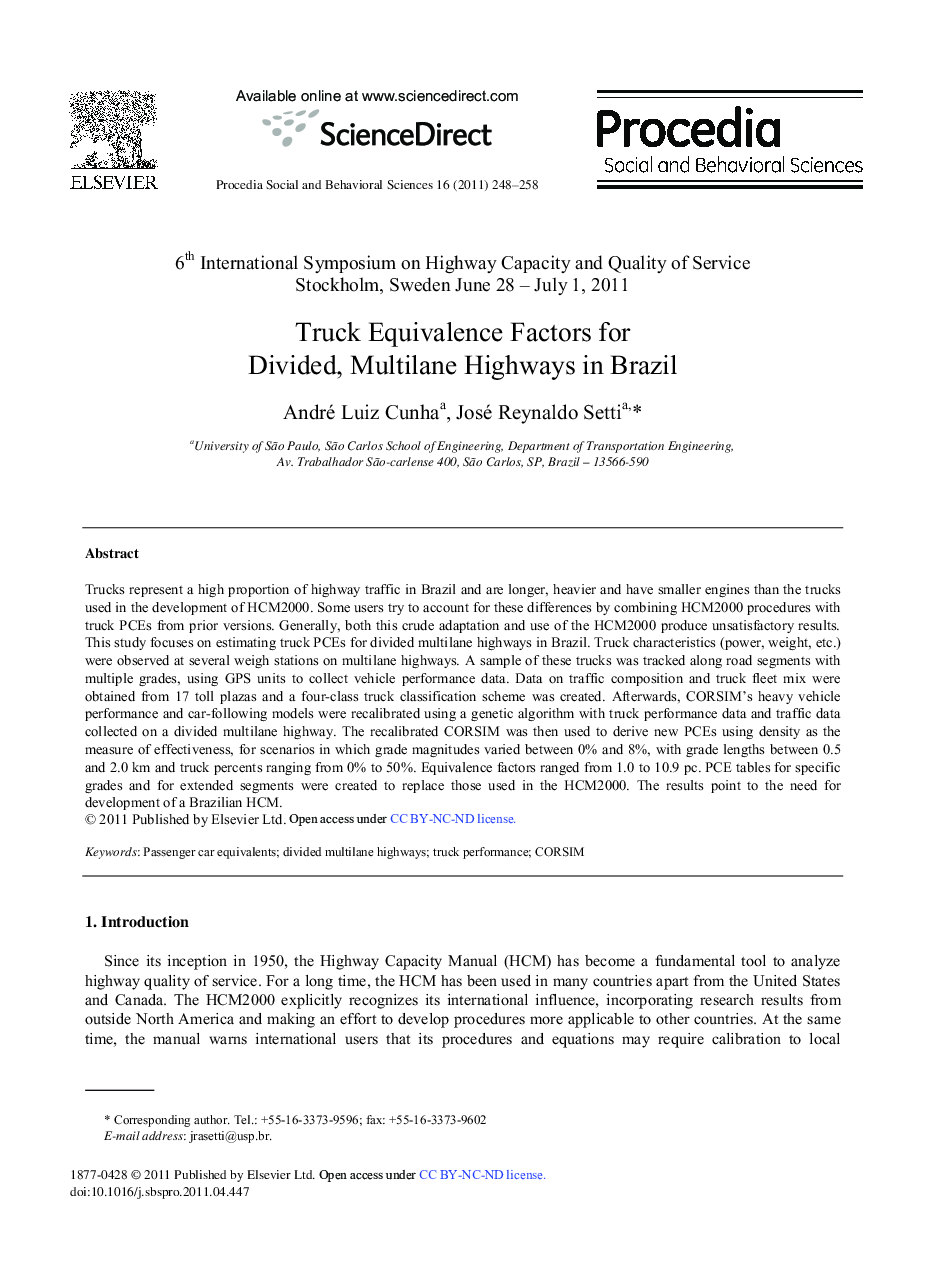| Article ID | Journal | Published Year | Pages | File Type |
|---|---|---|---|---|
| 1124158 | Procedia - Social and Behavioral Sciences | 2011 | 11 Pages |
Trucks represent a high proportion of highway traffic in Brazil and are longer, heavier and have smaller engines than the trucks used in the development of HCM2000. Some users try to account for these differences by combining HCM2000 procedures with truck PCEs from prior versions. Generally, both this crude adaptation and use of the HCM2000 produce unsatisfactory results. This study focuses on estimating truck PCEs for divided multilane highways in Brazil. Truck characteristics (power, weight, etc.) were observed at several weigh stations on multilane highways. A sample of these trucks was tracked along road segments with multiple grades, using GPS units to collect vehicle performance data. Data on traffic composition and truck fleet mix were obtained from 17 toll plazas and a four-class truck classification scheme was created. Afterwards, CORSIM's heavy vehicle performance and car-following models were recalibrated using a genetic algorithm with truck performance data and traffic data collected on a divided multilane highway. The recalibrated CORSIM was then used to derive new PCEs using density as the measure of effectiveness, for scenarios in which grade magnitudes varied between 0% and 8%, with grade lengths between 0.5 and 2.0 km and truck percents ranging from 0% to 50%. Equivalence factors ranged from 1.0 to 10.9 pc. PCE tables for specific grades and for extended segments were created to replace those used in the HCM2000. The results point to the need for development of a Brazilian HCM.
